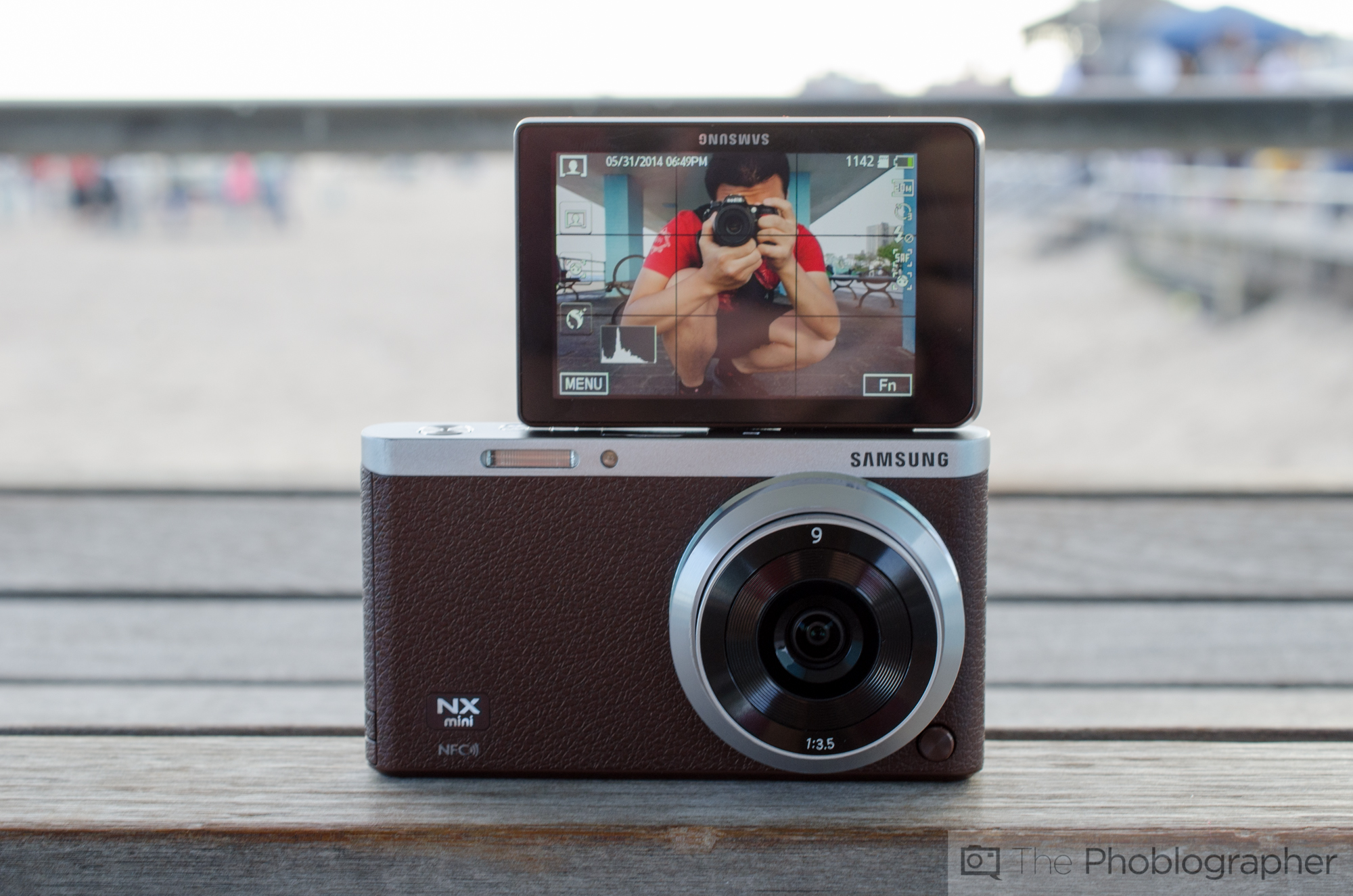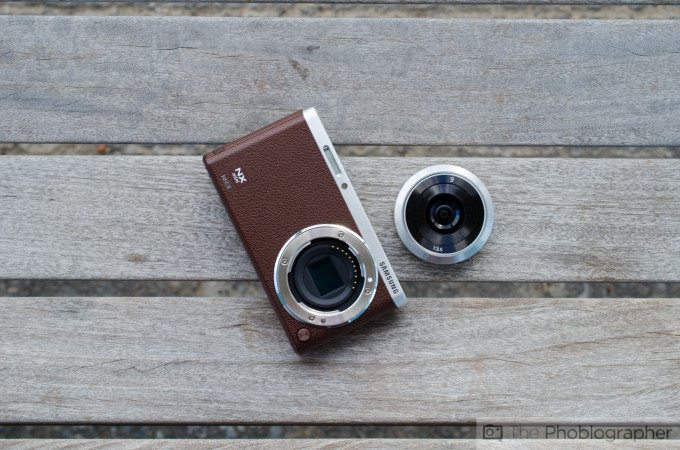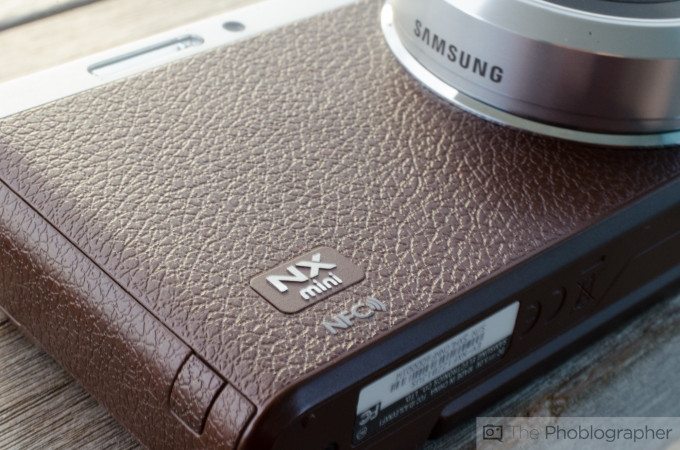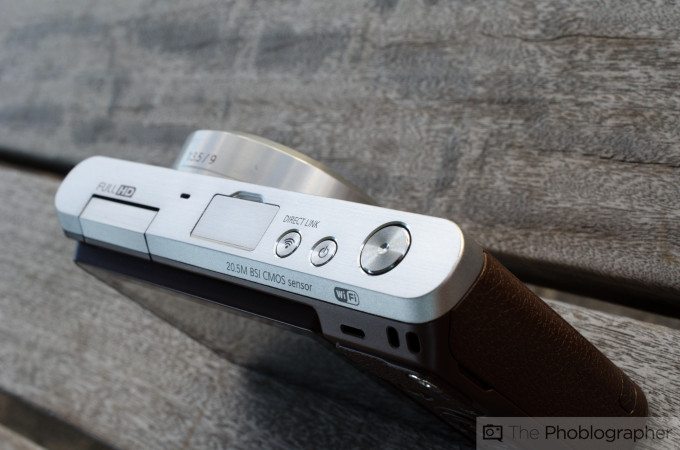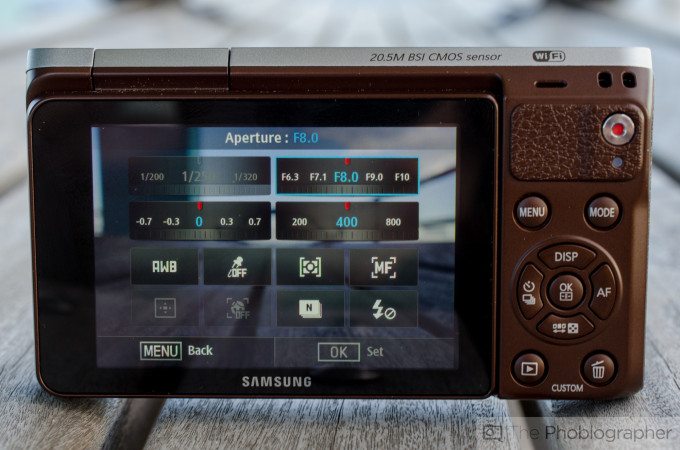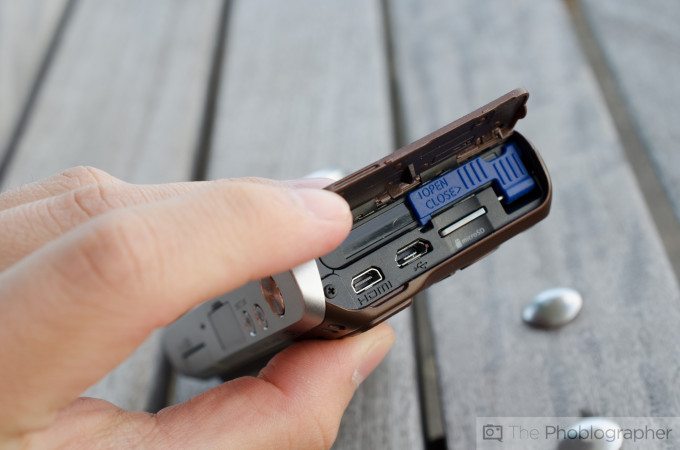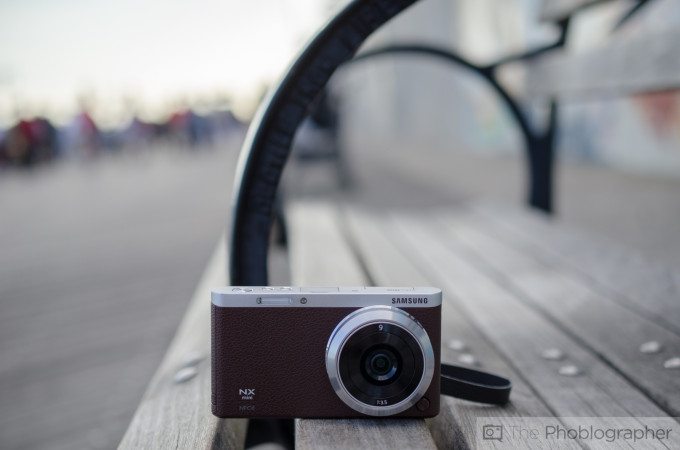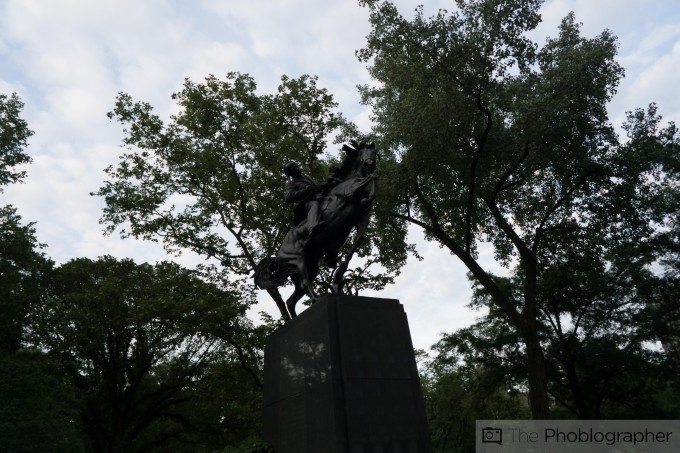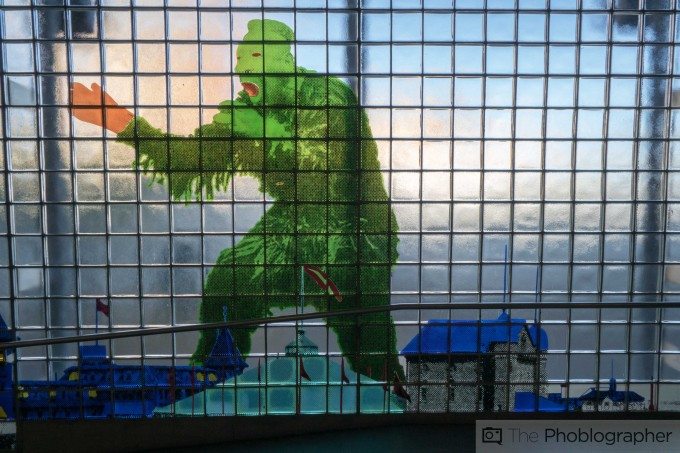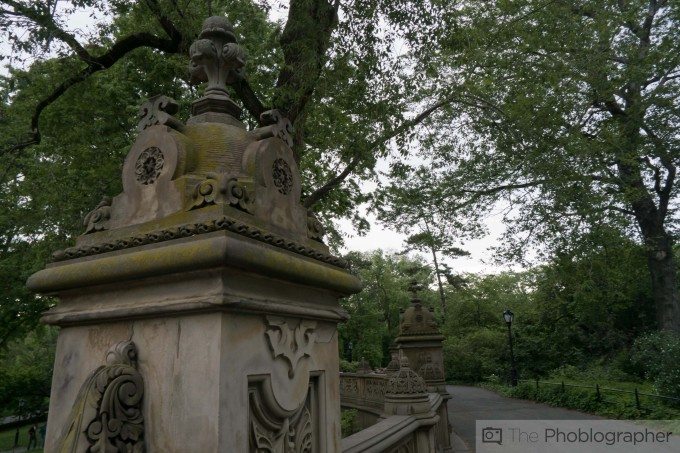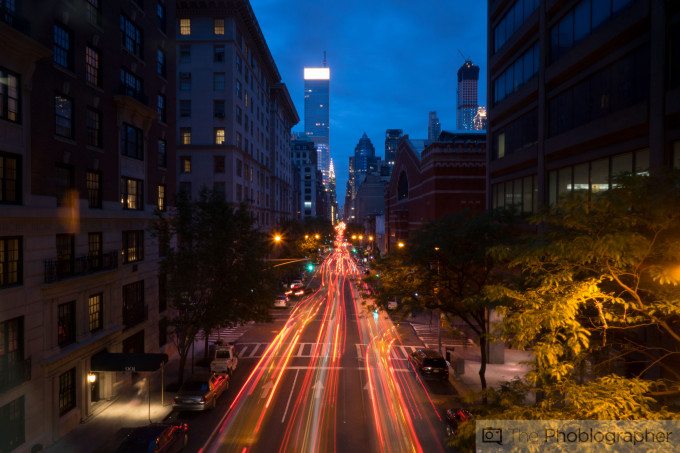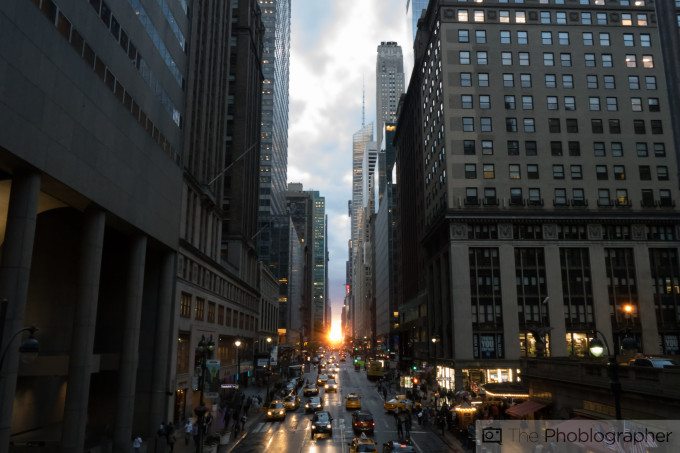Samsung has carved a little niche for itself in the mirrorless camera space. So far, we’ve been impressed with the image quality and built-in WiFi sharing functionality of the NX30 and NX300. The company claims that it’s second in the compact system camera market, and now it’s looking to expand its horizons with a new 1″-sensor camera. The NX Mini is not only smaller than Samsung’s previous APS-C camera bodies, it also requires a whole new NX-M lens mount…and yes, it has a 180-degree flip-up screen for selfies.
The NX Mini is a bold step for Samsung, whereas Fujifilm has stuck to its APS-C-sized guns and Olympus with the Four Thirds sensor. But this new smaller camera brings a host of questions as to the quality of its diminutive sensor and how many lenses we can expect for this new, smaller mount. While there’s no way to answer the latter question for now, we can find out what Samsung’s smallest camera yet is cracked up to be.
Pros and Cons
Pros
- All metal body
- Touchscreen navigation makes up for the lack of buttons
- The high-resolution sensor resolves astounding amounts of detail
- Decently fast AF speeds
Cons
- Chintzy fake, plastic leather makes the device feel cheap
- Low-light performance is lacking
- Grippage fans won’t like camera’s completely flat body
Gear Used
We tested the Samsung NX Mini with the Samsung NX-M 9mm f3.5 ED lens.
Tech Specs
Taken from theB&H Photo listing of the camera.
- 20.5MP 1″ BSI CMOS Sensor
- 3.0″ 460.8k-Dot Tilting Touchscreen LCD
- Full HD 1080p Video Recording at 60 fps
- Built-In Wi-Fi Connectivity with NFC
- 6 fps RAW Continuous Shooting at 20MP
- Electronic Shutter: 1/16000 – 30 seconds
- ISO Range: 160 – 12800
- Extended ISO Sensitivity: 100 – 25600
- Wink Shot for Self-Portraiture
- Includes Adobe Photoshop Lightroom 5
Ergonomics
The first thing you’ll notice about the NX Mini is that it literally has no front grip at all. Like a point-and-shoot camera, Samsung has designed the NX Mini to be as slim and pocketable as possible. While the camera does fit snuggly into my pockets, I’ve often had to hold the camera in a claw-like grip, pinching the front with three or four fingers while I press my thumb firmly against the back grip. Users with smaller hands may have a more comfortable time holding the camera, but those with larger mitts will get tired of holding the camera for long periods of time.
The front of the camera is pretty much devoid of any controls except for the lens release. On the upper-left is the camera’s AF-assist lamp and built-in flash.
Turning over the camera to the top we find a couple more things going on including the shutter button, as well as buttons to turn on the camera itself as well as its WiFi options. The camera does not have a true hot shoe for flashes, instead it has a power connector for its own special SEF-7A flash.
The majority of the camera’s controls are on the back and sit next to the camera’s 3″, 460.8k-dot tilting touchscreen. Here you’ll find the usual set of buttons including one for camera modes, menu, media playback, and trash, as well as four-way directional controls with important shortcuts assigned to each.
There aren’t any programmable function buttons to speak of, and there really isn’t anything customizable about the NX Mini’s interface at all. However, the touchscreen does make selecting your AF-point hassle-free with a single tap. The screen also makes up for the lack of physical controls with a virtual Fn button, which pops open a quick menu of camera options like autofocus modes and white balance.
The right side of the camera meanwhile holds a fold-out panel that reveals the camera’s battery compartment and MicroSD card slot. Sorry shooters, it does not come with a MicroSD card in the box, so you’ll need to buy a new memory module to go with your SD and CF card collection.
Build Quality
At first glance, the NX Mini looks like it’s entirely made of plastic, but underneath that faux leather exterior the camera is actually made from solid metal. The metal body gives the camera a nice solid build and just the right amount of heft without making it too heavy.
Unfortunately, Samsung opted to wrap the entire camera in a chintzy-feeling plastic material with a fake textured finish similar to leather. While it helps the camera look good, the added layer ends up making the device feel cheap and flimsy. If it were not for the exposed top plate on the camera, you would forget this device is actually made of metal.
Ease of Use
For the most part the NX Mini is a breeze to use. Most of the camera’s controls are spread across the screen’s bottom. You’ll become incredibly familiar with the down navigation button to toggle between shutter speed, aperture, exposure compensation, and ISO. Despite the lack of physical buttons on the camera body, the touchscreen is invaluable for making the NX Mini—and all cameras of this size like the Panasonic GM1—a breeze to control.
Like the rest of Samsung’s NX line, the Mini has some quick and easy to use sharing methods built-in. The camera also outputs excellent JPEG files that need very little gussying up, and most look great enough to share directly to Facebook and Flickr from the camera itself.
Autofocus

Samsung’s tiniest compact system camera autofocuses surprisingly quick. It’s accurate too, although it does hunt a bit every time I press the shutter button.When paired with the 9mm f3.5 prime lens, the NX Mini spins focus from its longest to shortest end before finally settling down. It’s a small but forgivable annoyance, since the camera only takes a split second to hone in on a subject. In darker situations, the camera’s AF system is still just as accurate, although it will take a bit longer to land on an exact point.
Manual focus, on the other hand, is an absolute pain. Firstly, to actually even access the setting requires digging into the Fn menu, then selecting the autofocus options, tapping on manual control. This prompts the camera to give you a zoomed-in view as you zero in on your target. Luckily, the autofocus system is fairly reliable and these are settings the shooter will never have to touch unless they’re setting up the unit for street shooting with zone focusing.
Metering
During the course of my sunny 13 (the 9mm f3.5 maximum aperture) testing, I found that the NX Mini was completely unreliable. The camera will do anything from overexposing an image by two stops to underexposing it for the same amount. It’s unfortunate the camera is unpredictable in this area, but in most cases I was able to fix any exposure issues in post.
Image Quality
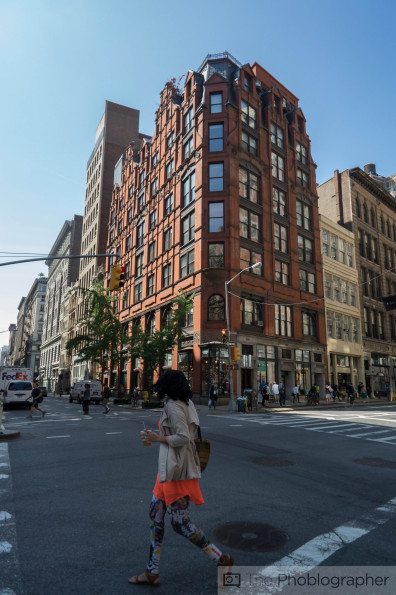 Despite the small 1″ form factor of the NX Mini’s sensor, it’s still a very good 20.3MP chip that renders lots of detail, and the 9mm f3.5 lens proved to be surprisingly sharp. The camera also produces good to slightly muted colors. Again, these are small niggling issues that can be fixed in post by upping the saturation by a few ticks.
Despite the small 1″ form factor of the NX Mini’s sensor, it’s still a very good 20.3MP chip that renders lots of detail, and the 9mm f3.5 lens proved to be surprisingly sharp. The camera also produces good to slightly muted colors. Again, these are small niggling issues that can be fixed in post by upping the saturation by a few ticks.
On the flip side, however, the sensor also inherits many of the same problems that plague small sensors. Noise at higher ISOs beyond 3200 becomes extremely noticeable, and the photos are overblown in direct sunlight. As a result, the RAW images the NX Mini produces need a lot of post-processing.
Luckily, the JPEG files this camera pumps out look almost exactly the way we would edit them. Given that this is a camera aimed more at entry-level users, it might actually be more practical to shoot images in Raw+JPEG mode and only edit files that really need that extra helping hand.
High ISO Output
Impressively, images shot with the NX Mini can look good to usable at ISO 3200. Any frames taken beyond that limit however take on the texture of sandpaper. That said, the NX Mini still manages to absorb a lot of detail whilst introducing a bit of noise. The photo above was shot at ISO 6400 and post-processed with a number of tweaks including noise reduction. Although the grain on the image is noticeable, it isn’t glaringly so.
RAW File Versatility
Like its older sibling, the NX300, the Mini’s RAW files are much easier to manipulate when it comes to shadow detail than lowering highlights. Likewise, I will have to recommend the photographer underexpose most of their images especially in the presence of bright sunlight.
Extra Image Samples
Conclusions
We rate this camera 3 out of 5.
 At the end of the day I realized the NX Mini was not made for me. It’s not made for gearheads or anyone looking for a lighter package to complement their full-frame camera. No, the NX Mini is designed for shooters looking to upgrade to their first mirrorless system from using their smartphone or any point-and-shoots that might still be lying around.
At the end of the day I realized the NX Mini was not made for me. It’s not made for gearheads or anyone looking for a lighter package to complement their full-frame camera. No, the NX Mini is designed for shooters looking to upgrade to their first mirrorless system from using their smartphone or any point-and-shoots that might still be lying around.
The NX Mini is an overall good camera for users who are just starting to get their head wrapped around different lenses. The camera pumps out great looking JPEGs, so this is the perfect camera to shoot and share with a smartphone, as with Samsung’s entire NX line. Ideally, shooters will want to pick up this camera with the longer 17mm lens for the much more versatile 45.9mm equivalent focal length with a more “bokehlicious” f1.8 aperture.

That all said, Sony has already a well-liked and proven RX family of 1″-sensor cameras—the latest of which, the RX100 Mark III comes with a tantalizing 24-70mm equivalent f1.8-2.8 lens. The NX Mini still has a leg up in that it can take on different lenses, but it’s still a toss up as to how many lenses Samsung will produce for this new mount. Users will be able to equip an adapter to attach Samsung’s larger lenses designed for its APS-C-sensor cameras, but by that time, one will more than likely be looking to upgrade to a new system anyway. With that in mind, we have to bring up the other elephant in the room, the Panasonic GM1, which is a camera that can use Olympus and Panasonic’s full line of Micro Four Thirds-lenses from the get-go.
While there’s no shortage of alternative options out there, the NX Mini is a fairly solid camera, but it stumbles as a first camera in a new line. On the upside, there’s no poorly metered or overblown image that can’t be fixed in post, and the NX Mini’s JPEG images are nearly perfect, too. I’ll have to wait for a few more lenses to come out before I’ll say the NX Mini is a sure bet, but it’s a great first step for a smaller Samsung camera.
For the best deal, you can pick up the camera kitted with the 9mm f3.5 lens from B&H Photo for $399.99.
Likes
- Long battery life
- Surprisingly good dynamic range
- Outputs great looking JPEG photos
- Simple Wi-Fi sharing options
Dislikes
- Poor handling of highlights in post
- With only three lenses, the NX Mini’s future is questionable
- Metering performance is poor and unreliable
- Expect to edit Raw images a lot in post
Recommended Lenses and Accessories
– 17mm f1.8 Lens: Although it’s a bit thicker, this 45.9mm-equivalent lens would make the Samsung NX Mini a very good street shooter.
– 9-27mm f3.5-.56 Lens: For a little bit of more flexibility, I also recommend picking up the the only zoom lens in the NX-M lineup for the extra reach of a 73mm equivalent focal length.
– Gordy Camera Strap: The NX Mini comes with an unfashionable and flimsy wrist strap, so you might want to upgrade to something more substantial and attractive.


